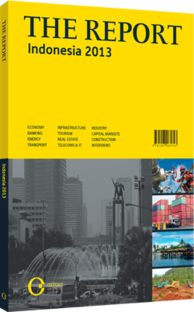Emirsyah Satar, President & CEO, Garuda Indonesia: Interview

Interview: Emirsyah Satar
In what ways might the ASEAN open-skies agreement change the domestic market?
EMIRSYAH SATAR: If you look at the ASEAN agreement, Indonesia is both the biggest sky and the largest market. In a broader sense, the world is gradually becoming boundary-less. The domestic airline industry must prepare itself for this, but we must still ensure that Indonesian airlines are treated in the same manner as foreign ones. The regulator must practise a system of reciprocity.
Foreign carriers often easily receive approval to operate in Indonesia, but domestic airlines are not always extended similar treatment in other countries. I firmly believe in competition, but I hope that we can practise and encourage more reciprocity to ensure that competition is fair. Both foreign and domestic airlines must play in the same level playing field.
How is progress being made in improving airport facilities across the country, and how have airline companies assisted with these improvements?
SATAR: The government’s Master Plan for Acceleration and Expansion of Indonesia’s Economy (MP3EI) is set to develop six economic corridors in Indonesia. One of the model’s main objectives is to improve national connectivity, which targets the country’s transport infrastructure, including airport facilities. The potential for growth in the other corridors is substantial. In 2011 we established our hub in Makassar. We believe in the growth potential of Indonesia, and following our studies we have determined that the greatest potential for future growth is in the eastern portion of the country.
It is interesting to note that the money that will go to supporting the MP3EI model comes from private sources, so for businesses operating under the private-public partnership scheme, the main challenge is regulation. Land acquisition for airport construction, for example, is quite difficult, even though the Indonesian Aviation Act (UU No 1/2009) has opened the door for the private sector to develop airports. We have seen an increase in interest from potential foreign investors inquiring about how to open airports in Indonesia, so the role of the private sector in developing airport facilities in the country will be very important in the future.
What is the outlook for the industry domestically, and what has been the impact of the global financial crisis on the Indonesian aviation sector?
SATAR: The outlook for the Indonesian aviation industry is very positive despite the global crisis, which has affected the aviation industries in Europe and the US and, to a certain extent, China. Due to domestic consumption, which is fuelling economic expansion, Indonesia’s aviation industry continues to grow. As a rule of thumb, passenger volume in the aviation industry tends to climb at roughly one and a half to two times the rate of GDP growth. This model holds true in Garuda’s case, given the 36.8% increase in passengers we saw in 2011, and the new routes and aircrafts that are being added.
To some degree, we have found that the financial crisis in the West has not had a negative impact here, and, in fact, regional traffic has remained quite strong for two reasons. First, with the other side of the world still dealing with the financial crisis, businesses are increasingly putting their money into Asia, which helps support passenger and economic growth. Second, during a crisis, the leisure market tends to drop off, but people still want to take vacations. The Japanese, Korean and Australian tourists who would typically venture to Europe and the US for holidays are now opting to travel regionally, and many are choosing Indonesia due to the proximity and the value for money.
However, the industry must remain cautious about the infrastructure supporting the development of the aviation sector. Issues that must be addressed include airport capacity, air control, proper access to airports and the infrastructure to support airport usage. The MP3EI model to advance economic development addresses investments in air transport infrastructure, so we have been making steps in the right direction to support future development of the country’s industry.
You have reached the limit of premium articles you can view for free.
Choose from the options below to purchase print or digital editions of our Reports. You can also purchase a website subscription giving you unlimited access to all of our Reports online for 12 months.
If you have already purchased this Report or have a website subscription, please login to continue.

